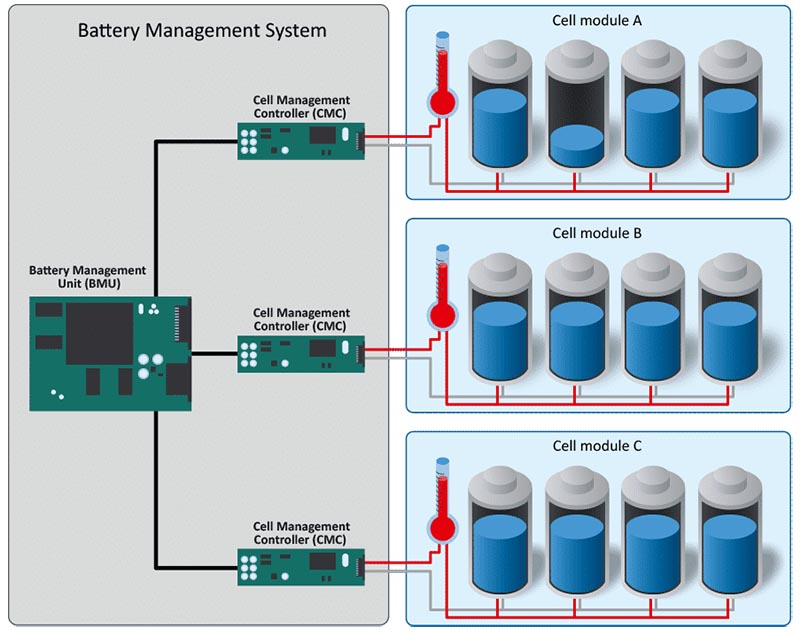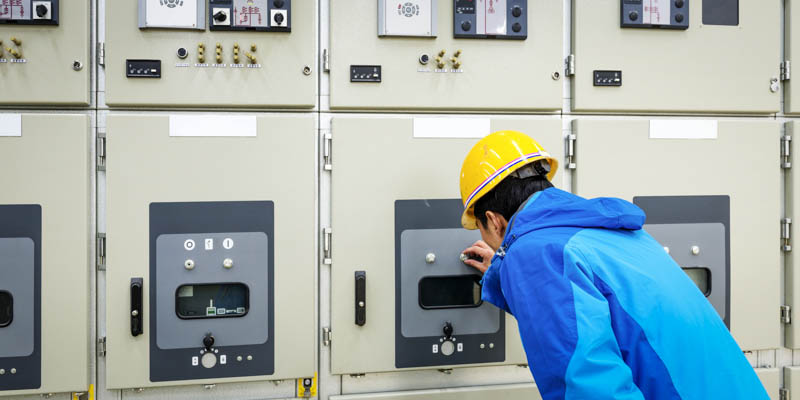Battery Monitoring Controller
A battery monitoring controller is a device used to monitor and control the status and performance of a battery. It is typically used in battery packs or battery systems to ensure their proper operation and provide optimal performance.
The battery monitoring controller has a variety of functions, including real-time monitoring of battery voltage, current, temperature and capacity parameters. It can provide accurate information about the status and health of the battery, so that the necessary care and maintenance measures can be taken in a timely manner.
In addition, the battery monitoring controller can also provide battery charging and discharge control functions. It can monitor the charging state of the battery and adjust the charging current and voltage as needed to ensure a safe and efficient battery charging process. At the same time, it can also control the discharge process of the battery to avoid excessive discharge and damage to the battery.

Battery monitoring controllers usually have a user interface and can be operated and monitored via a display or computer software. Users can view the real-time data and history of the battery through the interface, and make Settings and adjustments.
Scope of application
Battery monitoring controllers play an important role in many applications, especially for battery systems that require high reliability and long life, such as solar and wind energy storage systems, electric vehicles, banking, power, communications, military, aviation, rail and other industries. It is designed for computer network room, high-end IDC room, bank room, power distribution room, emergency power supply system, communication room, communication base station and UPS system.

In the process of circuit board processing for battery monitoring, the following matters need to be noted:
PCB design: The design of the circuit board should meet the needs and specifications of the battery monitoring system. Pay attention to the requirements of the size, level, wiring rules and electrical characteristics of the circuit board.
Component selection: Select the appropriate components to ensure their compatibility and performance requirements with the battery monitoring system. Pay attention to components’ packaging, operating temperature range, power consumption, and reliability.
Welding technology: The use of appropriate welding technology, such as surface mount technology (SMT) or plug-in welding technology (TH), to ensure the reliable connection of components and circuit boards. Pay attention to welding temperature and time to avoid damaging components or circuit boards.

Quality control: In the entire processing process, strict quality control and testing to ensure that the quality and performance of the circuit board meet the requirements. This includes checking welding quality, circuit connectivity, component installation location and marking.
Electrostatic prevention: During the processing, take necessary electrostatic preventive measures to avoid electrostatic damage to the circuit board and components. Use ESD equipment and workstations, and wear ESD gloves and clothes.
Testing and debugging: After the processing is completed, the circuit board is tested and debugging to ensure that its function and performance are normal. Including circuit test, function test and performance test.
Documentation: In the whole process of processing, detailed documentation, including design documents, processing records and test results. This helps with traceability and troubleshooting.



